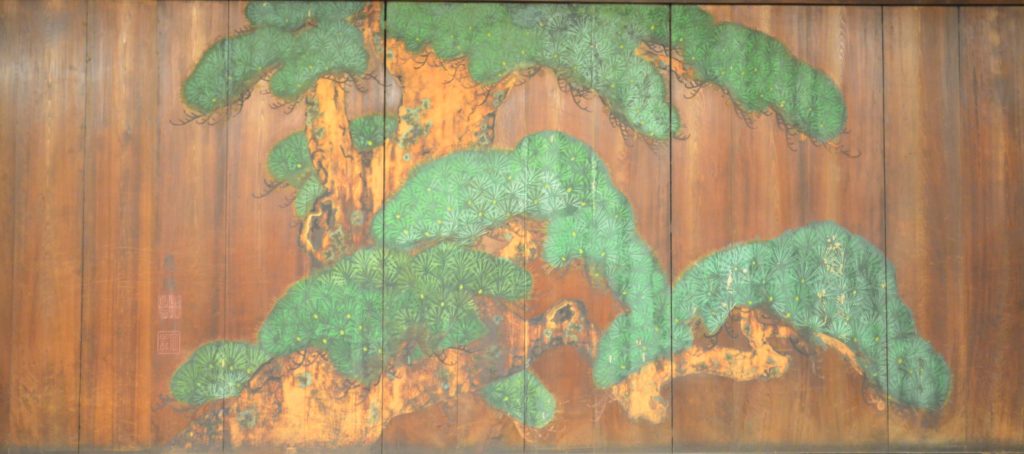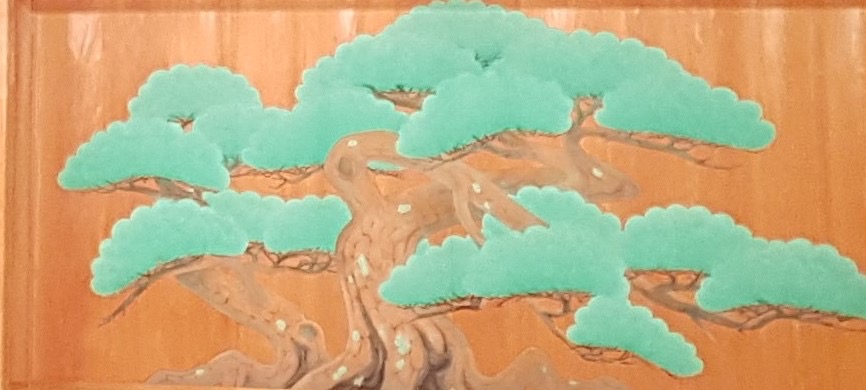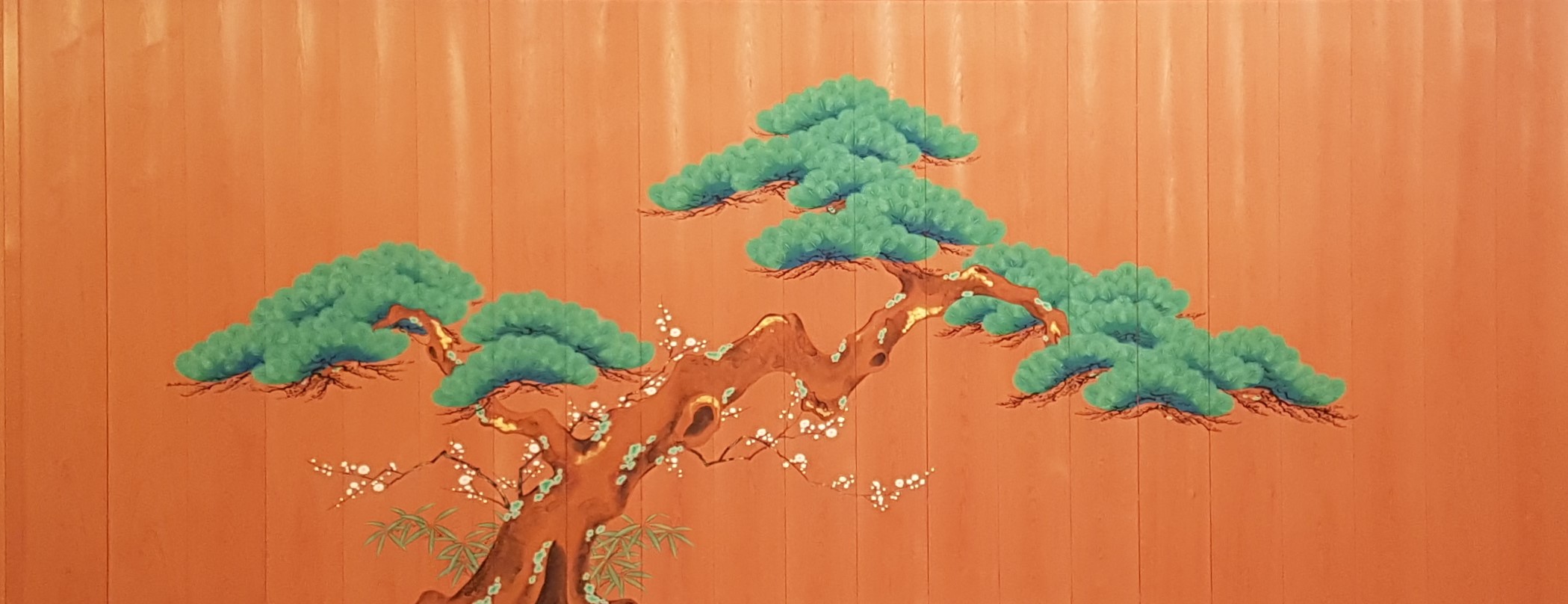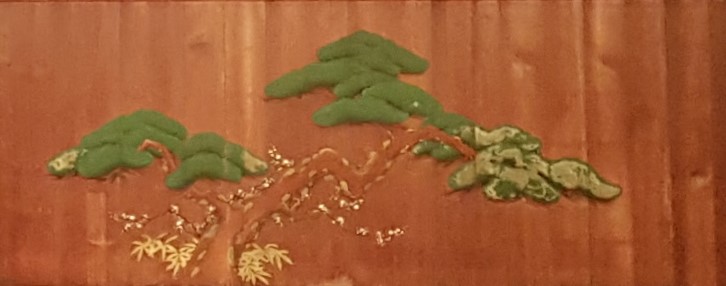
The back wall of the stage, called the mirror board (kagami ita), is always painted with a large pine tree. This is the only backdrop used for noh and kyōgen plays and is multifunctional. Tying back to nōgaku’s ritualistic roots, the pine itself is an auspicious symbol and is considered to be a place to which the gods can descend to witness performances. Practically speaking, the mirror board does not indicate a specific time or location, which enables easy transformation of space, with verbal decor indicating location. In the past, when noh and kyōgen were performed outside, the mirror board would help to bounce the sound back towards the audience.


